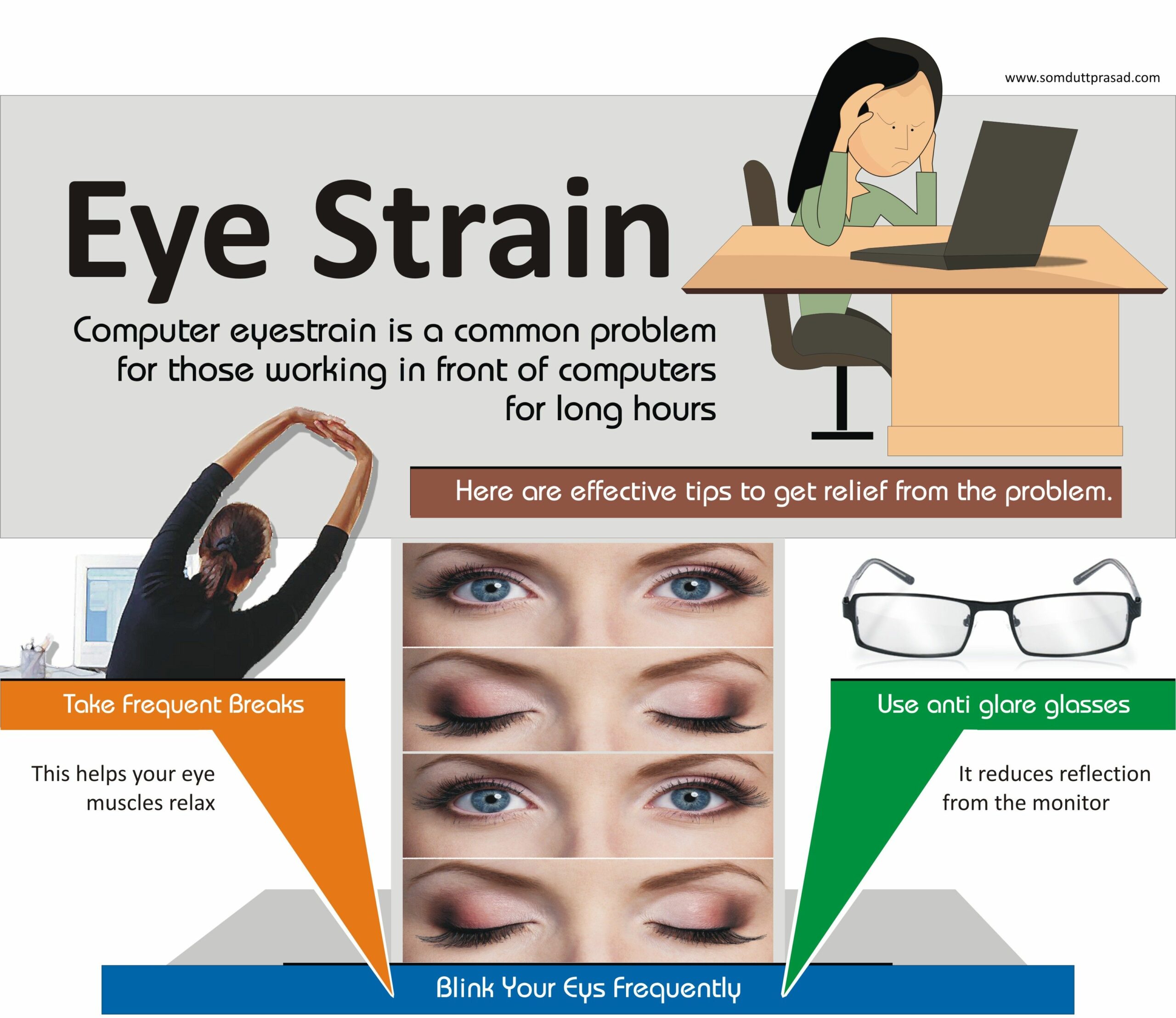In today’s digital age, computer use has become ubiquitous, leading to increased incidences of eye strain among users. This phenomenon is commonly referred to as “computer vision syndrome” or “digital eye strain.” Symptoms can range from mild discomfort to debilitating conditions, manifesting as fatigue, headaches, and blurred vision. To mitigate these adverse effects, it is crucial to adopt effective eye strain relief strategies.
Understanding the challenges that arise from prolonged computer use is essential in formulating appropriate interventions. This article outlines various methods that can provide relief from eye strain while optimizing the overall visual experience for computer users.
Considerations for the Ergonomic Workspace
Creating a workspace that prioritizes eye health is the foundation of effective eye strain management. An ergonomically designed workstation is not merely about physical comfort; it encompasses the visual demands placed upon the eyes during computer use.
Optimal Screen Positioning
The positioning of the computer screen is paramount. Ideally, the screen should be set at an arm’s length away from the face and tilted slightly backward, enabling the user to gaze downward at a 15 to 20-degree angle. This alignment reduces strain on the neck and promotes a more natural eye position, minimizing excessive muscle engagement. Moreover, the top of the screen should be at or just below eye level to reduce glare and facilitate a more relaxed viewing angle.
Lighting Conditions
Light plays a vital role in eye comfort. Insufficient or overly bright lighting can exacerbate eye strain. To mitigate glare, utilize ambient lighting rather than direct overhead lights, and avoid reflections on the screen by adjusting the position of the monitor. Natural light sources, such as windows, should be considered, but it’s advisable to utilize curtains or blinds to diffuse harsh sunlight. For tasks that require intensive focus, task lighting with adjustable brightness can be beneficial.
Adopting the 20-20-20 Rule
One of the simplest yet most effective strategies for alleviating digital eye strain is the 20-20-20 rule. This method stipulates that for every 20 minutes of screen time, users should look away from the computer and focus on an object at least 20 feet away for 20 seconds. This practice encourages the eyes to shift focus, reducing fatigue and allowing the eye muscles to rest. Furthermore, intermittent breaks should be scheduled, wherein users rise, stretch, and perform eye exercises to promote circulation and relaxation.
Incorporating Visual Exercises
Integrating specific eye exercises into daily routines can bolster eye health significantly. These exercises can vary from simple activities, such as blinking frequently to retain moisture in the eyes, to more deliberate practices such as rolling the eyes, which helps alleviate muscle tension. Convergence exercises, which involve focusing on an object as it moves closer to the nose, can also assist in enhancing the eye’s adaptability and coordination.
Nourishing Eye Health through Diet
The health of one’s eyes is intrinsically linked to overall nutritional intake. A balanced diet enriched with essential vitamins and minerals is fundamental to maintaining optimal visual function. Specific nutrients, such as Omega-3 fatty acids, lutein, zeaxanthin, and vitamins A, C, and E, have been shown to foster eye health.
Omega-3 fatty acids, found in fish oils and certain nuts, are particularly beneficial for reducing dry eye symptoms. Lutein and zeaxanthin, often found in leafy greens and eggs, are powerful antioxidants that can protect against harmful blue light exposure. Including a variety of fruits, vegetables, and healthy fats in one’s diet can vastly improve eye health and mitigate the effects of prolonged screen usage.
The Role of Blue Light Filters
With the advent of modern technology, screens emit high levels of blue light, which can contribute to eye strain and disrupt sleep patterns. To counteract this effect, blue light filter screens or protective eyewear can be employed, which have shown promise in reducing glare and enhancing visual comfort. Additionally, many devices now offer built-in blue light filters that can be activated during evening hours to minimize disruption to circadian rhythms and promote better sleep.
Staying Hydrated
Dehydration can lead to or worsen the symptoms of dry eye. Maintaining adequate hydration throughout the day is essential for overall health, including the health of the eyes. Drinking water regularly helps to keep eye tissues hydrated and facilitates the production of tears, which are crucial for maintaining a moist and comfortable ocular surface.
Regular Eye Examinations
Routine eye exams are pivotal in the proactive management of good eye health, particularly for individuals who engage in extensive computer use. Eye care professionals can provide tailored advice specific to each individual’s unique circumstances, ensuring that correctional lenses and treatments are up to date. Furthermore, comprehensive examinations can detect potential issues before they escalate into more serious conditions.
Beyond Just Relieving Eye Strain
Implementing these strategies does not only provide relief from eye strain; they contribute to long-term eye wellness and overall health. User awareness about the importance of regular breaks, ergonomic setups, nourishment, and hydration fosters a more holistic approach to computer usage. Incorporating effective habits into daily routines can create a sustainable lifestyle that preserves ocular health and enhances productivity.
In summary, the need to address eye strain in computer users is critical in the modern digital landscape. By optimizing workplace ergonomics, practicing the 20-20-20 rule, engaging in visual exercises, maintaining proper nutrition, using blue light filters, staying hydrated, and scheduling regular eye examinations, users can significantly reduce discomfort and improve their quality of life. It is imperative that computer users take proactive steps to safeguard their eye health, thus ensuring that they remain productive and comfortable while navigating an increasingly digital world.
